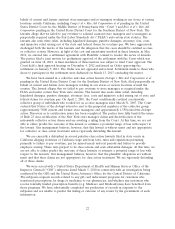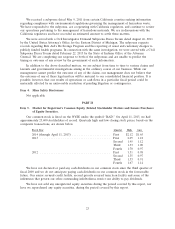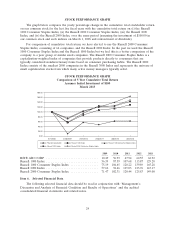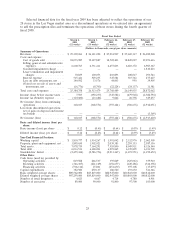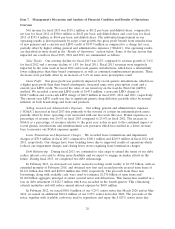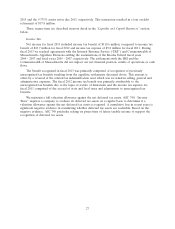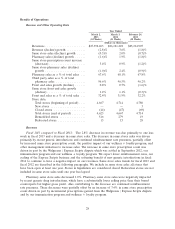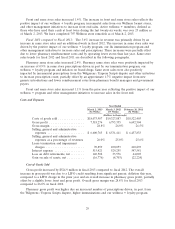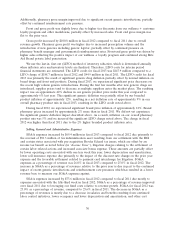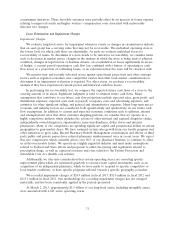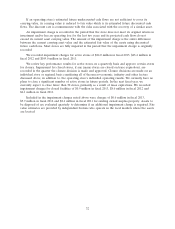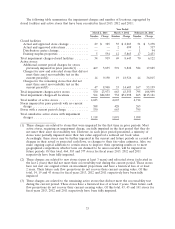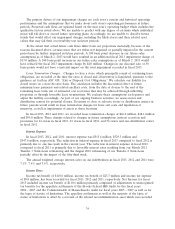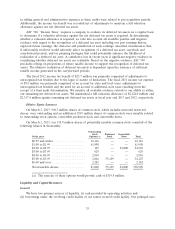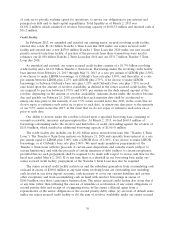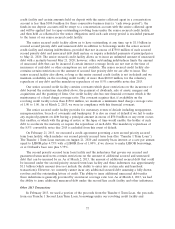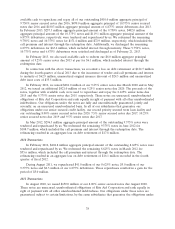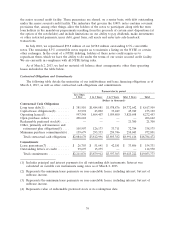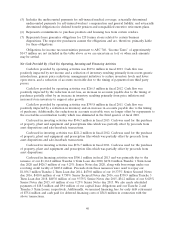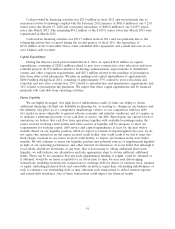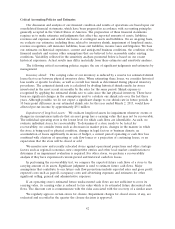Rite Aid 2013 Annual Report Download - page 33
Download and view the complete annual report
Please find page 33 of the 2013 Rite Aid annual report below. You can navigate through the pages in the report by either clicking on the pages listed below, or by using the keyword search tool below to find specific information within the annual report.If an operating store’s estimated future undiscounted cash flows are not sufficient to cover its
carrying value, its carrying value is reduced to fair value which is its estimated future discounted cash
flows. The discount rate is commensurate with the risks associated with the recovery of a similar asset.
An impairment charge is recorded in the period that the store does not meet its original return on
investment and/or has an operating loss for the last two years and its projected cash flows do not
exceed its current asset carrying value. The amount of the impairment charge is the entire difference
between the current carrying asset value and the estimated fair value of the assets using discounted
future cash flows. Most stores are fully impaired in the period that the impairment charge is originally
recorded.
We recorded impairment charges for active stores of $24.0 million in fiscal 2013, $43.4 million in
fiscal 2012 and $109.0 million in fiscal 2011.
We review key performance results for active stores on a quarterly basis and approve certain stores
for closure. Impairment for closed stores, if any (many stores are closed on lease expiration), are
recorded in the quarter the closure decision is made and approved. Closure decisions are made on an
individual store or regional basis considering all of the macro-economic, industry and other factors
discussed above, in addition to, the operating store’s individual operating results. We currently have no
plans to close a significant number of active stores in future periods. In the next fiscal year, we
currently expect to close fewer than 50 stores, primarily as a result of lease expirations. We recorded
impairment charges for closed facilities of $0.9 million in fiscal 2013, $8.6 million in fiscal 2012 and
$6.1 million in fiscal 2011.
Included in the impairment charges noted above were charges of $0.6 million in fiscal 2013,
$5.9 million in fiscal 2012 and $2.4 million in fiscal 2011 for existing owned surplus property. Assets to
be disposed of are evaluated quarterly to determine if an additional impairment charge is required. Fair
value estimates are provided by independent brokers who operate in the local markets where the assets
are located.
32


